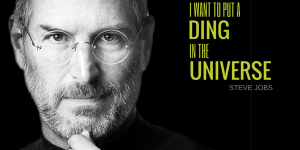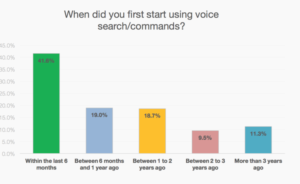Here’s how to manage relationships between an agile marketing Team and Stakeholders who have a vested interest in the work the Team is doing.
Today we’ll dive into the Stakeholder role. Of course, the role of Stakeholder is not new to agile marketing, however, it’s not explicitly talked about in other agile frameworks. Here’s how we describe this role in the Agile Marketing Navigator:
“Stakeholders have a vested stake in the work that the marketing team produces. This group often comes from Sales, Product Development and Customer Service departments. Stakeholders participate in the Collaborative Planning Workshop and offer feedback during the Team Showcase.”
How to identify your team’s stakeholders
There are many stakeholders in an organization, but the ones we’re concerned with in agile marketing are the people that directly care about the outcomes the team is producing. That list of Stakeholders might remain constant, or it could change regularly, depending on the nature of the work. Some teams have a large number of Stakeholders, whereas others have a select few.
To identify whether someone is a Stakeholder to your agile team, ask yourself the following questions:
- Did this person request work from the team?
- Do I regularly update this person on the team’s work?
- Has this person previously asked for a status report?
- Is this person responsible for delivering on business goals that tie directly to the work your team is doing?
How do Stakeholders request work?
While an agile marketing team is self-organizing, it’s important that they keep a clear line of communication open between the team and the Stakeholders. The work the team is doing should be transparent to Stakeholders at all times.
The Marketing Owner on the team is responsible for managing Stakeholder relations. The Marketing Owner ultimately gets to prioritize what work the team will do and in what order, but needs to be having regular conversations with Stakeholders.
As a Stakeholder that requests work, it’s important to share with the Marketing Owner why your work is important and how it fits into the agreed upon Guidepoint that you co-created. You may have to be flexible and understand that some trade-off decisions may need to be made and not all requests may get worked on.
The work requests will go on the team’s Marketing Backlog, as long as the Marketing Owner believes that the work will contribute to the value the team is trying to achieve. Some teams allow anyone to contribute ideas to the backlog, others set it up as a conversation with the Marketing Owner. Your organization can determine this process for what works best with your current culture.
Communicating with Stakeholders
The team needs to be transparent about when the work might get done and keep you informed in a timely manner if priorities change. The Blueprint document that gets created at the beginning of the project or quarter is meant to be a conversation starter between the Marketing Owner and the Stakeholders.
The Blueprint should be discussed during each Team Showcase (and more often on a 1:1 basis if needed). This way everyone knows what buckets of work are coming up next, if they’re still the highest priority, and if not, what priority may replace it (note: we aren’t adding more work, but switching out priorities).
Stakeholders’ role at the Team Showcase
During the Team Showcase that happens at the end of each Cycle, Stakeholders with a vested interest in the work should attend and be ready to ask the team questions and offer suggestions for future work. Keep in mind that this isn’t an approval meeting. At this point the team has delivered work, but it’s to see what they’ve done, hear how various tactics are performing in the market, and have a collaborative conversation around what work should follow, or how work that was done may need to be altered or improved upon for upcoming Cycles.
As a Stakeholder, try to leave your personal opinions out. Instead of saying, “I wish that button was red,” you may want to ask the team, “How have customers responded to the blue button? Have you tried testing it in another color to see if people submit more requests?” This empowers the team to take your suggestions in a data-driven manner versus merely an opinion.
Stakeholders’ role at the Collaborative Planning Workshop
Stakeholders should also participate in the Collaborative Planning Workshop at the beginning of the quarter or project. As a Stakeholder, you are an active participant in this collaboration. We ask that you raise any objections to the Guidepoint if it doesn’t align with where you were hoping it would go. It’s important to have these transparent conversations early and get on the same page with the team.
From there, the Brainstorm happens and even if you aren’t a marketer, contributing ideas from a customer perspective adds value. After this session, the Blueprint gets put together by the Marketing Owner, but you should make sure that you are in agreement with the priorities shown. If not, it’s your responsibility to bring it up early and have a conversation with the Marketing Owner. However, at the end of the day, it is the Marketing Owner’s decision as this role has to balance all Stakeholders’ needs.
The post Stakeholders: Getting started with the Agile Marketing Navigator appeared first on MarTech.
MarTech(35)
Report Post







